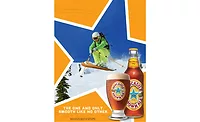Powers Distributing manages the challenges in today’s fractionalized beer market
Company adjusts logistics, marketing to manage SKU proliferation
For Powers Distributing, the key to modern beverage fleet management comes down to one simple term: velocity.
Powers, not unlike most beer wholesalers, recognizes that SKU proliferation has fundamentally and irreversibly changed the distribution landscape. However, the Orion, Mich.-based distributor of MillerCoors products, and a wide array of import and craft beer brands, recognized early on that managing the new normal was about understanding how the SKU explosion has helped reduce the velocity of classic, tried-and-true high-volume brands and packages and how that rippled through multiple aspects of the fleet operation — even some less obvious ones.
Load Configurations
That dynamic is the major impetus behind Powers’ shift to building orders by stop, versus by SKU. The company has been using a greater number of large-bay trucks versus traditional side loaders, on which it fits pre-built orders. “Building by stop is always a big transition in the warehouse, but the savings on the driver productivity side is significant,” says Gary Thompson, executive vice president and general manager of Powers.
But improving efficiency on a tractor-trailer is a heavier lift than making similar enhancements in the warehouse. After all, he points out, the warehouse is a controlled environment. That’s not the case on the road.
“You’ve got to deal with parking, traffic — plus a tractor-trailer is a big expense,” he notes. “Then, if you’re using [the tractor-trailer] over the course of eight years, think of the fuel and insurance on top of that. Take those costs, break them down and then add to that the cost of the driver — especially since CDL drivers are difficult to keep — it costs you more than a guy picking in a warehouse.”
If an operation can eliminate an entire route by shifting to pick-to-stop, then it can afford to hire the extra workers that the transition will require in the warehouse, Thompson says.
Eliminating some routes also enables Powers to better manage bring-backs and out-of-date products. “With the proliferation of brands and packages, every wholesaler is dealing with an increase in out-of-dates and bring-backs,” Thompson notes. “That impacts productivity. You’ve got to get bring-backs and out-of-dates under control, and you’ve got to make sure that when you do this, you route accordingly so the driver has enough time and you’re not in a position to have to add more routes.”
Enhancements in routing technology have helped make such tasks more manageable, it says. Powers has been using Roadnet transportation suite, which combines routing with real-time data collection and analysis tools.
Re-routes
Speaking of routing, another considerable mindset shift involves re-organizing routes based on the revenue generated by each case, versus the number of cases themselves. Before, it was simple enough to prioritize accounts based on the sheer volume of high-velocity SKUs that were ordered. As velocity has slowed and variety has increased, it’s become necessary to develop a routing strategy that reflects the accounts that represent the greatest profit-margin potential.
“When you look at customers, you can’t just look at the number of cases, you’ve got to look at the amount of gross margin in that customer’s purchasing,” Thompson says. “As a result of that, you might be able to afford to do other things in your routing that you thought you couldn’t.”
For instance, if one customer is buying eight cases of a high-gross-margin product and another is buying 12 cases of a low-gross-margin product, you can afford to service the former account more than the latter. And that should be a consideration in re-routing efforts.
“There’s more gross margin in [craft, import and specialty SKUs] than in your typical premium domestic and below-premium beers,” he explains.
Brand visibility
Powers Distributing’s fleet enhancements aren’t limited to logistical. A less obvious, but no less important, element is driven by marketing.
When the velocity of high-volume SKUs slows and is offset by a series of high-margin newcomers, it becomes necessary for those older SKUs to share some of the brand visibility space on the sides and backs of trucks. But that’s easier said than done.
Powers has developed a couple of solutions to that conundrum. On bulk trailers, the company has installed sliding side-wraps, which frequently swap out one brand’s artwork for another. “That’s not a solution for side-bay trailers,” Thompson points out. “One of the things we did for those is we took two brands from Constellation and put one on each side of the trailer. So, one side of the trailer talks about Victoria and the other, Pacifico.”
The company also has affixed interchangeable frames to the back of some trailers. For those, Powers can print branded panels and insert those into the frame whenever necessary.
“The beer business itself is fractionalizing, and the old high-volume SKUs are dropping in velocity because consumers have so much choice and they’re moving around within those choices,” Thompson says. “That doesn’t mean a brand is down. The big breweries are offering new packaging configurations of big beers as fast as everyone is. Even when the number of brands don’t increase, the number of packages does.” BI
Looking for a reprint of this article?
From high-res PDFs to custom plaques, order your copy today!




